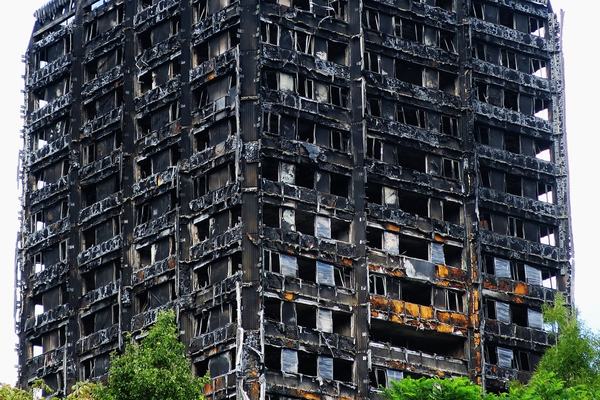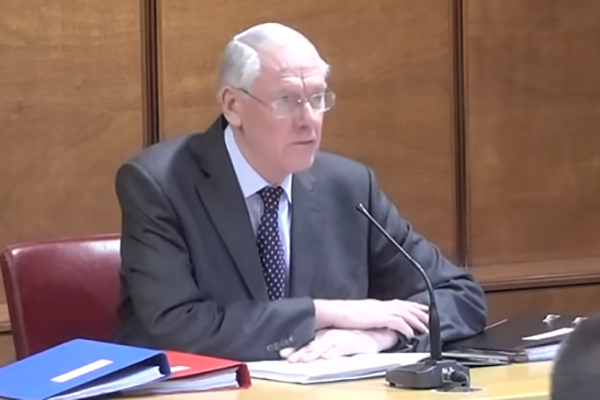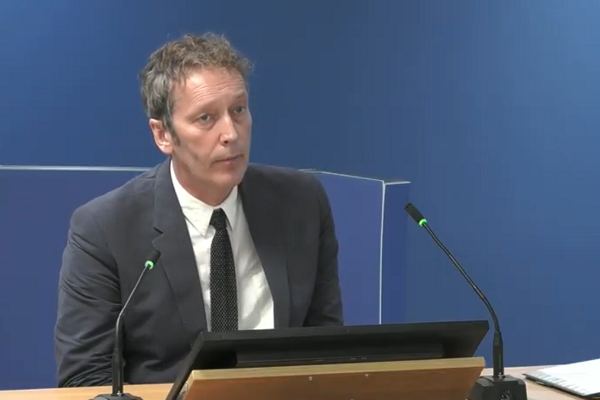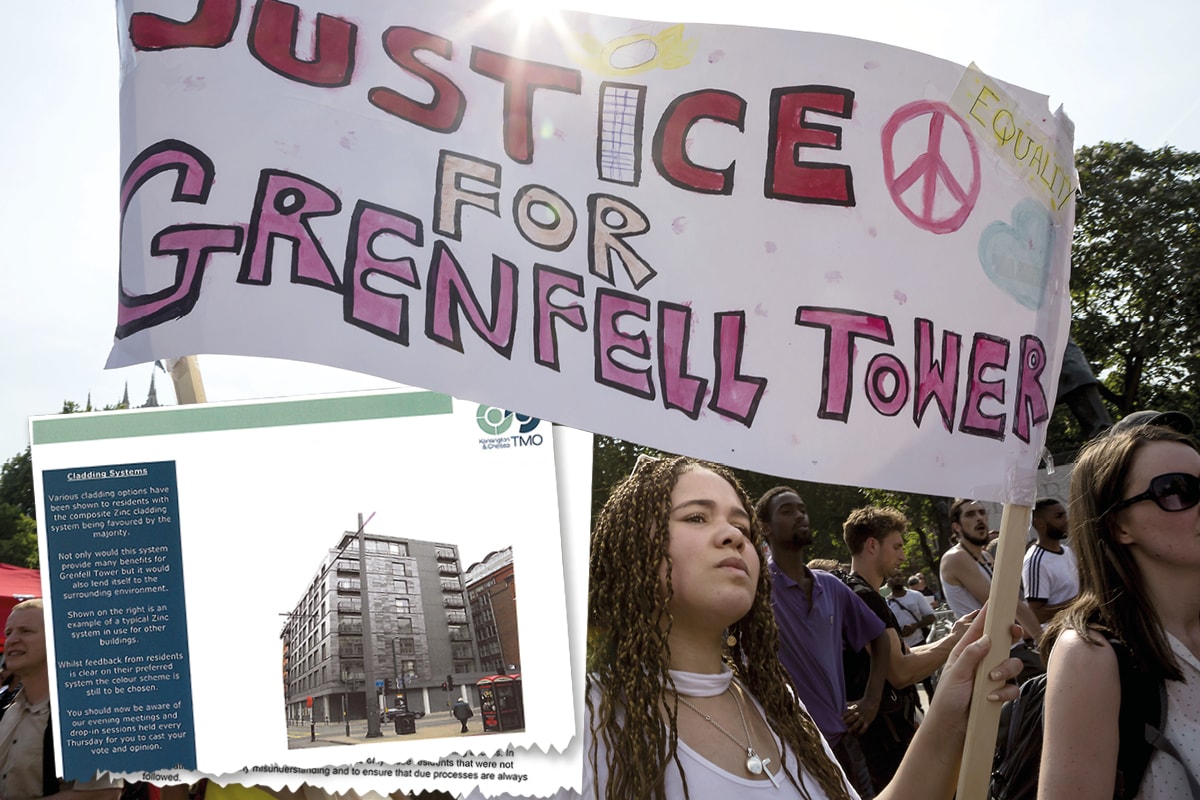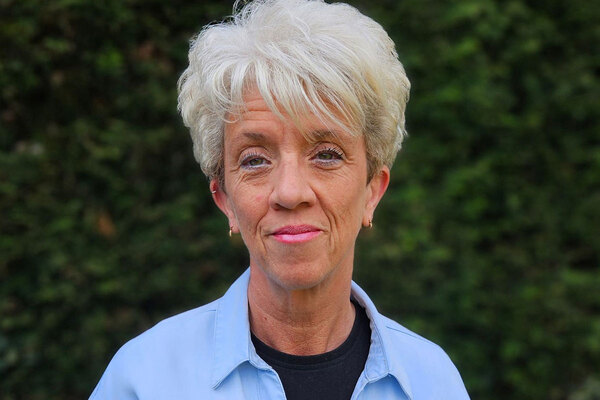You are viewing 1 of your 1 free articles
Grenfell management company ignored Lakanal recommendations after government said they would ‘not be mandatory’
The company that managed Grenfell Tower ignored recommendations from a previous deadly tower block fire because government officials told them they would “not become mandatory”, Inside Housing can reveal.
A previously unreleased report, branded a missed chance to save 72 lives, went before the board of Kensington and Chelsea Tenant Management Organisation (KCTMO) on 2 May 2013.
It considered the recommendations of the coroner investigating the Lakanal House fire – which killed six people in July 2009 – including the retrofitting of sprinklers in high rises and the danger of fire spread over the “external envelope” of a building (see box below).
The recommendations had been made in a letter from the coroner, Frances Kirkham, to then-communities secretary Eric Pickles on 28 March 2013.
“If these recommendations were to be implemented – generally this would only be possible after a change in legislation – they would have a significant impact on all landlords with responsibility for high-rise blocks,” the report, which can be downloaded below, says.
Related Files
However, it goes on to say “initial indications from [the Department for Communities and Local Government] are that these recommendations are unlikely to be taken up” and “will not become mandatory”.
At this stage the Grenfell refurbishment was still being procured and the council had not yet set the final budget meaning that if the recommendations were taken up, they could have been included.
It was also three weeks before Mr Pickles formally responded to the coroner – suggesting the government was quietly signalling to social housing providers to ignore the findings even before it officially responded.
Grenfell United, the survivors and bereaved families group, told Inside Housing: "As shocking as these revelations are, they’re not surprising. The evidence was there before the fire that regulations were not fit for purpose, materials were dangerous and testing systems flawed.
"What is surprising is the government’s continued resistance to change. No one cared enough then and no one seems to care enough now. Enough with supportive platitudes, we need change now before another Grenfell."
What warnings did KCTMO ignore?
The KCTMO report in 2013 considered the recommendations of the Lakanal House coroner, but government officials told them the findings would not be mandatory.
The findings it considered and what eventually happened with relation to Grenfell are below:
- Recommendation one: “Consolidated national guidance on ‘stay put’ and its interaction with ‘get out stay out’ evacuation strategy including how such guidance is disseminated to residents”
This was a recommendation for government rather than KCTMO. But at Grenfell, experts have said the stay put strategy failed at 1.32am, but residents were still advised to stay in their homes for another 90 minutes. This likely cost many the chance to escape.
- Recommendation two: “In relation to high-rise premises, responsible persons to provide relevant information on or near the premises, such as premises information boxes, must be accessible to London Fire Brigade and tailored to their requirements and kept updated by building owner”
The fire service repeatedly sought plans of the tower from KCTMO officials on the night of the fire, as well as a list of residents, but KCTMO struggled to provide either until the morning. The delay led incident commander Andy Roe to tell a liaison officer: “The fact that you’ve not been able to get me a set of plans is a major deficiency and will be highlighted.”
- Recommendation three: “Extending scope of fire risk assessments to include inspection of the interior of flats/maisonettes necessary”
This level of fire risk assessment is known as a ‘Type Four’ and is designed to check if the compartments which are supposed to resist fire have been breached. At the time of the fire, Grenfell Tower had only ever had a Type One assessment, which does not check inside homes, as it remained the legal minimum and was the overwhelming norm for social housing properties.
- Recommendation four: “Encourage providers to retro fit sprinklers within high-rise buildings”
The government wrote to providers setting out this finding, but without making it mandatory or providing any funding. Research by Inside Housing in 2015 showed less than 1% of social housing towers had sprinklers inside flats. None were ever fitted at Grenfell Tower.
- Recommendation five: “Review of building regulations approved document dealing with spread of fire over external envelope of the building to provide clear guidance”
This review was put off by Eric Pickles until 2016/17 and had not been completed by the time the fire ripped through the tower. The cladding fitted to the outside had a certificate giving it a ‘Class 0’ rating – which was the requirement under the guidance for the ‘external surfaces of walls’ on high rises. The refurbishment which added the cladding had not begun when KCTMO considered this recommendation.
In the end, Mr Pickles promised to write to social landlords encouraging them to fit sprinklers and review building regulations by 2016/17. The latter review had not been carried out when the Grenfell Tower fire killed 72 people in 2017.
Steve Reed, a Labour MP who has campaigned for fire safety changes since Grenfell, said: “The government and KCTMO, Grenfell Tower’s housing managers, could have saved the 72 lives lost at Grenfell Tower but their dogmatic opposition to regulation meant nothing was done. Conservative government ministers must now accept their culpability in this shocking tragedy.”
Arnold Tarling, a fire safety expert and chartered surveyor, said: “These measures would have prevented Grenfell. But this document shows [KCTMO] got a nod from Mr Pickles that they didn’t have to do anything, and so why spend the money?”
The report to the KCTMO board and available above, was written by Janice Wray, health, safety and facilities manager at KCTMO and is titled Current TMO Position on Fire Risk Assessments and Related Fire Safety Measures.
Under a heading titled “financial and risk issues” it goes on to say “the recommendations put forward by the coroner… will be investigated in relation to our stock so that the impact on resources can be quantified”.
The recommendations listed in the report include extending the scope of risk assessments, keeping “relevant information” near high rises for use by the London Fire Brigade and new guidance on stay put advice.
Grenfell only ever received a Level One fire risk assessment, no sprinklers were present in the building, flames ripped across a combustible façade installed during the refurbishment and fire fighters struggled to get relevant information from KCTMO on the night.
Elsewhere in the document, the refurbishment of Grenfell Tower itself is considered.
It notes: “Negotiations of the contract for the refurbishment of Grenfell Tower with [proposed contractor] Leadbitter are ongoing. There is still a considerable difference between Appleyard (cost consultants) cost plan and Leadbitter’s estimate of the cost.
“In May 2013 a decision will be required regarding whether the project can be brought within budget with Leadbitter or whether the project should go out to competitive tender.”
The project was eventually tendered out, with Rydon ultimately appointed to do the work.
A spokesperson for the Ministry of Housing, Communities and Local Government said the government took action on the Lakanal House findings and the review of regulations was underway but not complete by the time of the fire.
KCTMO did not respond to a request for comment.
